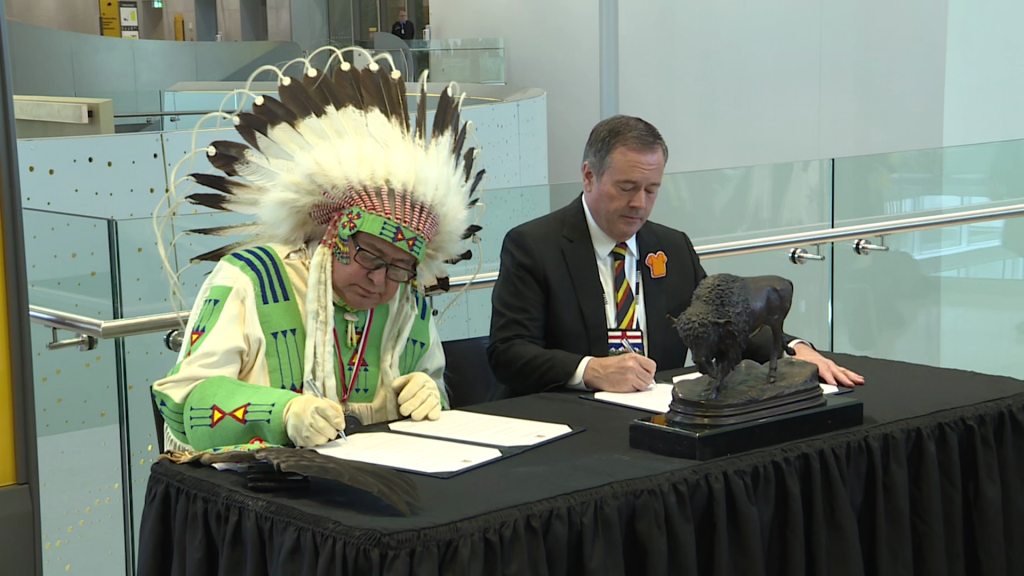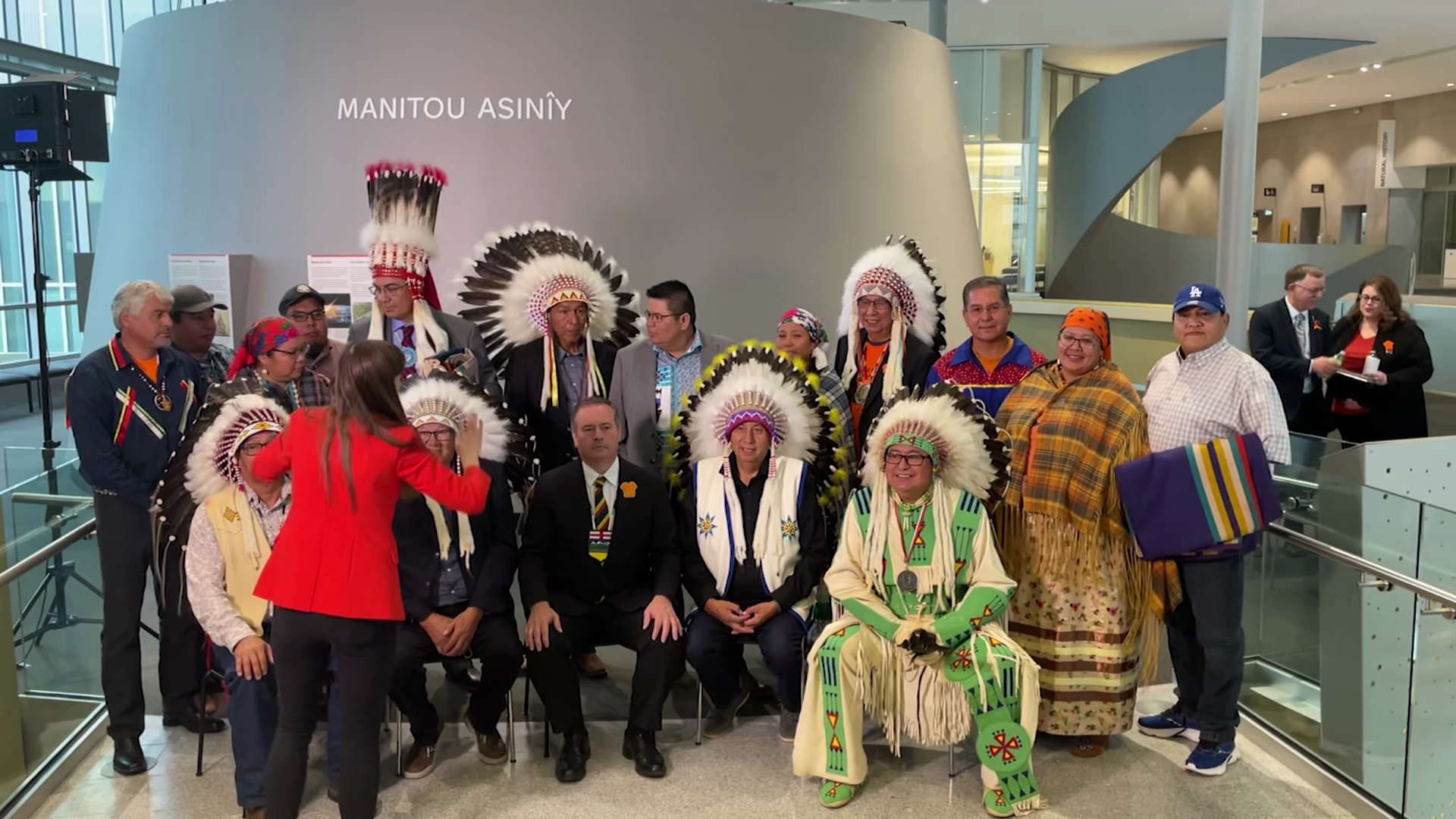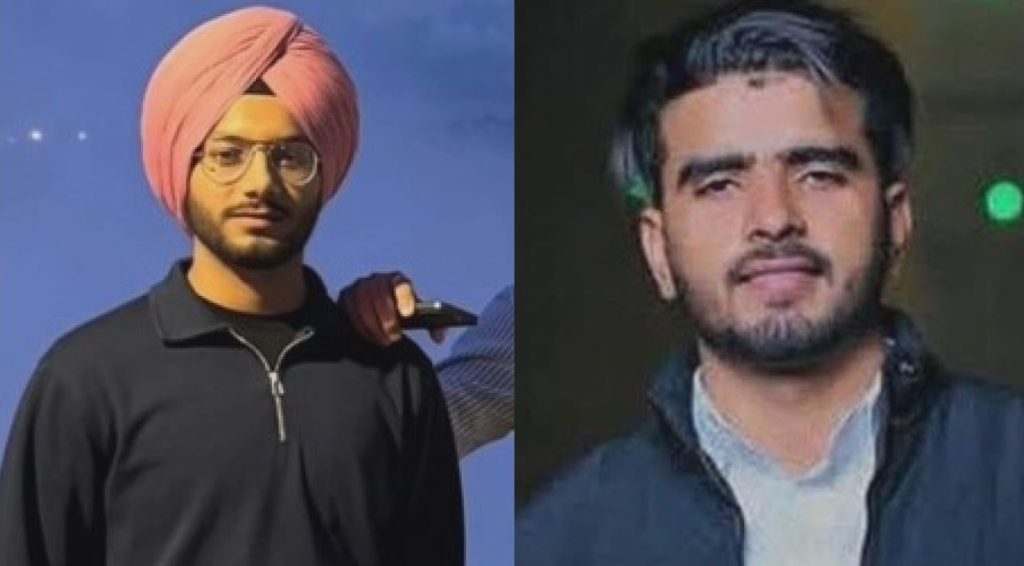Creator’s Stone meteorite to be returned to original site in Alberta

Posted September 30, 2022 1:23 pm.
Last Updated October 1, 2022 9:34 am.
The Alberta government has signed an agreement with a First Nations group on Truth and Reconciliation Day to finally give back a sacred stone over 150 years after it was first stolen from them.
Manitou Asinîy (Mahn-toh Ah-si-knee), also known as the Creator’s Stone or Manitou Stone, is a 145-kilogram iron meteorite that landed in the Iron Creek area, close to the Alberta-Saskatchewan boundary, billions of years ago.
The stone held spiritual significance to Indigenous people across the Prairies and was thought to protect buffalo herds.
It was moved to Toronto in the late 1800s and later went to the Royal Alberta Museum in Edmonton.
Consultations between the museum and Indigenous groups about the fate of the stone started in 2002.
Elder Leonard Bastien, the chair for the Manitou Asinîy-Iniskim-Tsa Xani Centre, says the return of the stone is important to reawakening a sense of peace, prosperity, hope, and healing for all people.
“It’s my hope and my prayer and faith that this rock will assist us in moving forward,” Bastien said.
He adds just like how Indigenous peoples followed and “moved with the buffaloes,” the rock will enable everyone to move forward in reconciliation.
“Today, it’ll give us direction, and a new pathway into moving forward.”
The meteorite is said to be drained of its powers if photography of it is taken, which has led to the suffering of Indigenous peoples, according to Bastien.
“It was prophesied that the rock, if it was moved, that we would suffer. Historically it’s been recorded, when the rock was moved, smallpox took us down. And since then, a lot of things continue to keep us down,” Bastien said.
Minister of Culture Ron Orr says there are quite a few artifacts that belong to the First Nations peoples in the Royal Alberta Museum, but those Nations can speak to the government about reclaiming them.
“The Athabasca Chipewyan people were desiring to have their Treaty 8 medal back a while ago, a couple of weeks ago, and I was able to return it to them. So, we’re open to those conversations,” Orr said.
READ MORE: Royal Alberta Museum to return Indigenous artifacts, holds some for ‘preservation purposes’
Indigenous attendees of the event say seeing the stone and witnessing the joint ownership was a meaningful and important experience for them.
“It’s a part of our past. So how the churches have certain symbols, this is one of our symbols from the Creator letting us know that He is here, and He is always going to be here with us,” said Jeannie Paul, one of the board members for Indigenous Knowledge and Wisdom Centre.
Charles Weaselhead, the former Chief of Kainai First Nation, says, “Our elders have always stated that we need to work as a collective, in regard to the upkeep of our language, our culture, and who we are. That’s one of the key things we’ve lost over time is our self-identity.”
Marcel Weasel Head, a councilor with Blood Tribe First Nation, says this is “one example of things that were taken away.”
“Now at least our future generations, our kids, and kids of the future can understand what this is all about and what it means: it’s coming back together and living in harmony,” Weasel Head said.

A group of people with Elder Leonard Bastien Premier Jason Kenney pose for a photo at the Royal Alberta Museum in Edmonton on Sept. 30, 2022.
Plans are underway to build a prayer centre for Manitou Asinîy to be housed, and where First Nations people can connect with their sacred cultural traditions.
Blaine Favel, a former Chief of the Poundmaker Cree First Nation, says there will be opportunities for Albertans to raise funds for the centre.
“I think of the many hundreds of millions of billions of dollars that were invested in the destruction of our culture. I think to preserve our culture deserves a few million,” Favel said.
Favel says the prayer centre will take a few years to be built, so Manitou Asinîy will remain at Royal Alberta Museum for the time being.
-With files from The Canadian Press








